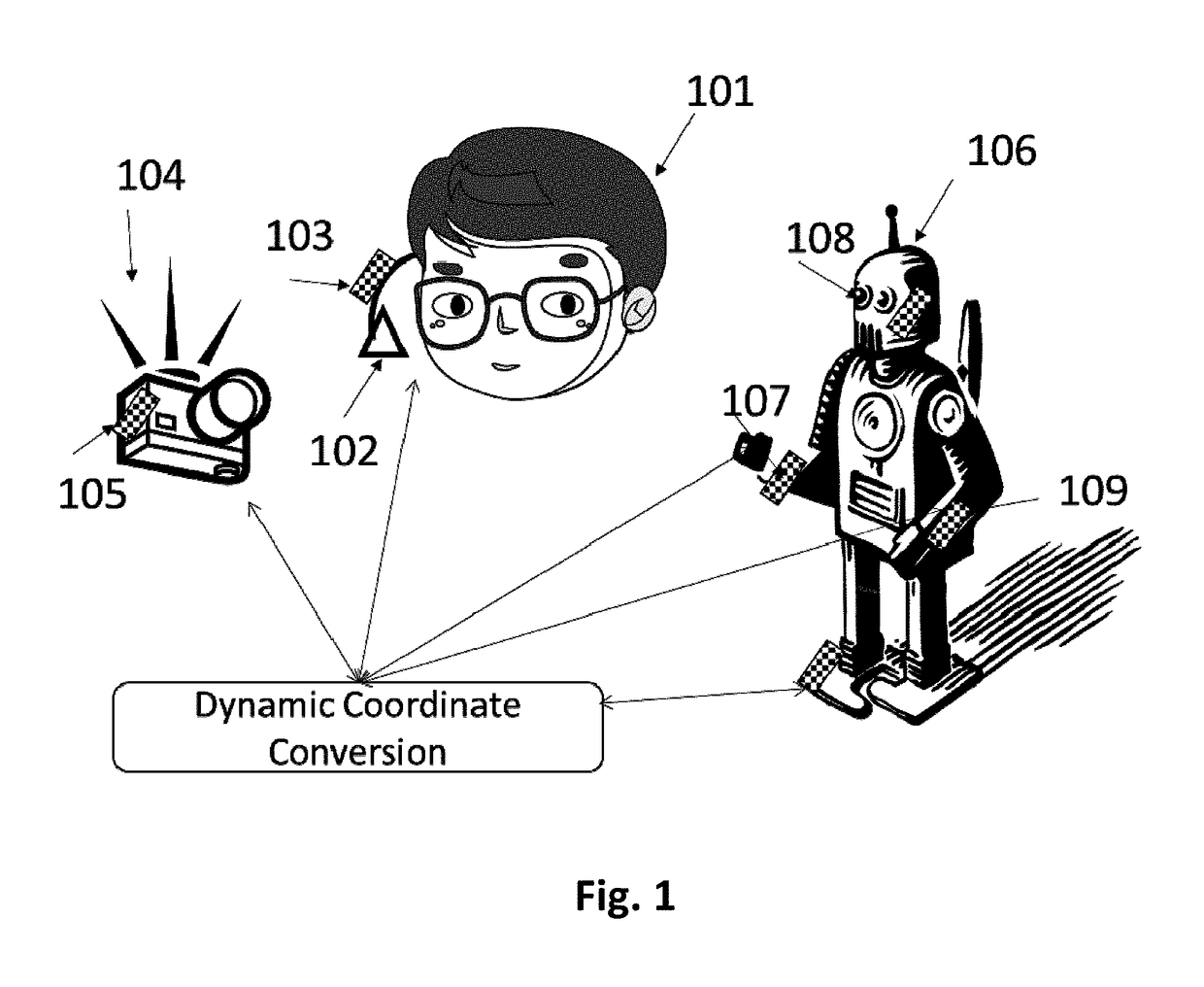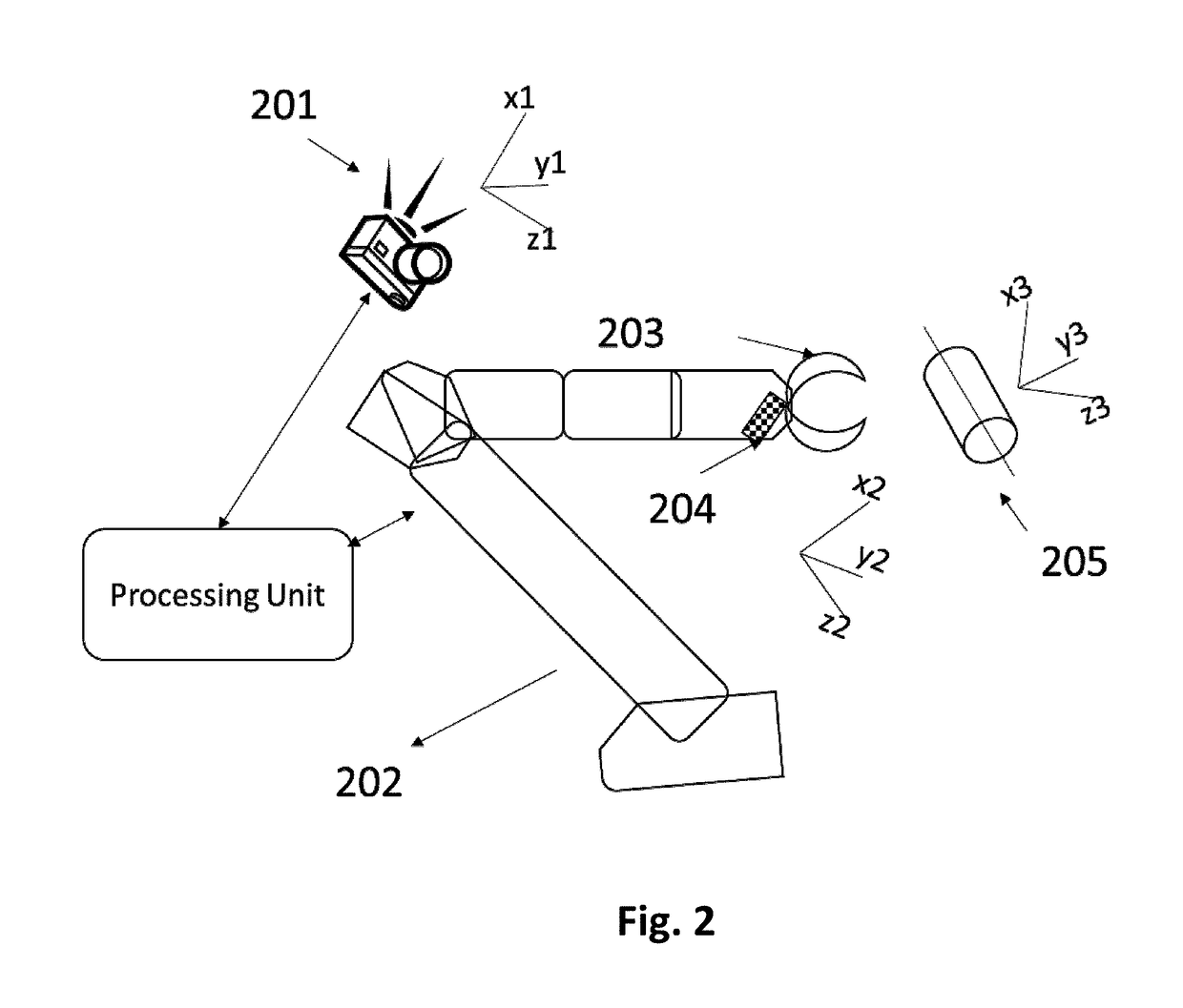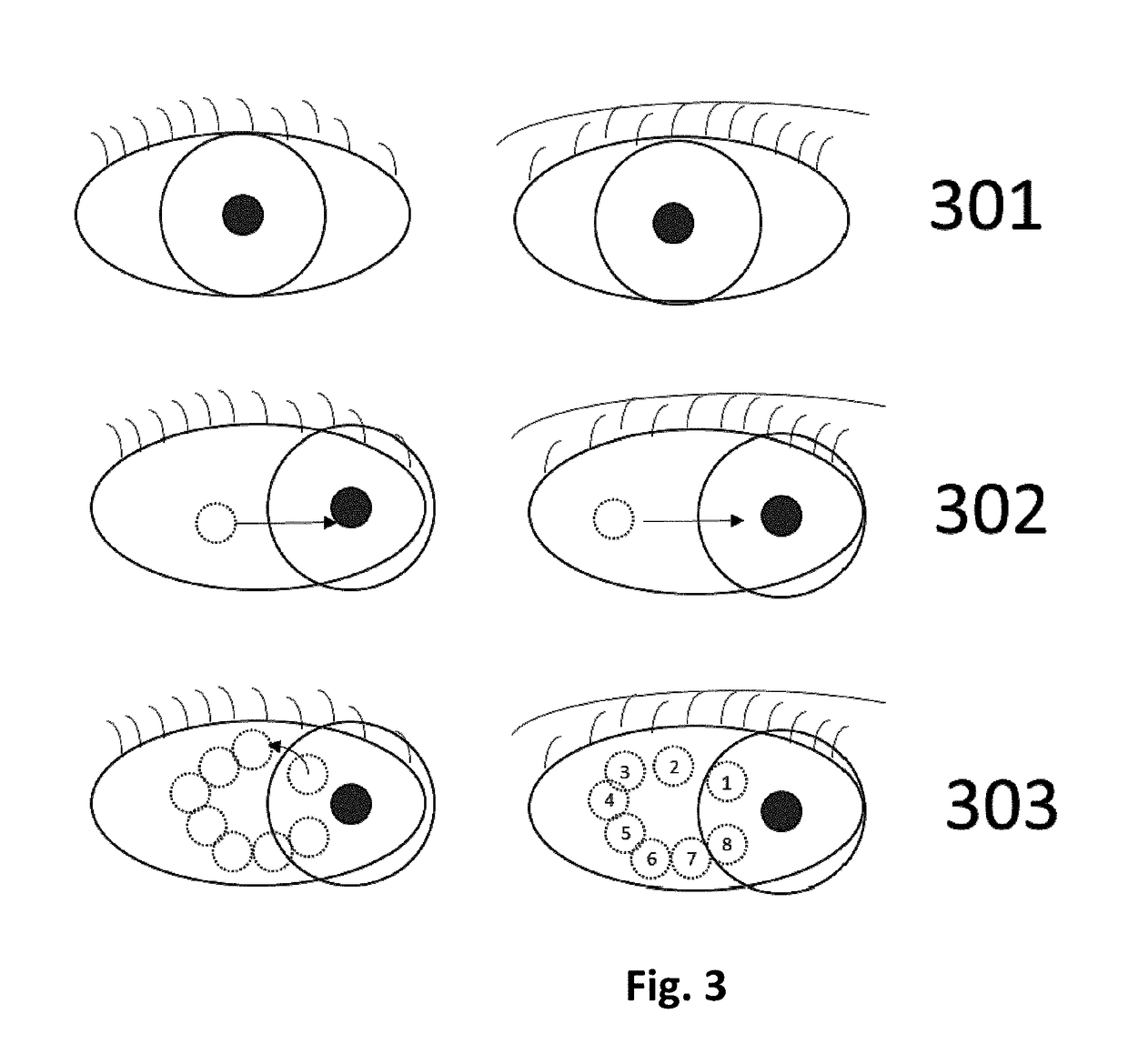Dynamic multi-sensor and multi-robot interface system
a multi-sensor and multi-robot technology, applied in the field of adaptive learning interface systems, can solve the problems of complex problem, complicated problem, and high cost of setup effor
- Summary
- Abstract
- Description
- Claims
- Application Information
AI Technical Summary
Benefits of technology
Problems solved by technology
Method used
Image
Examples
Embodiment Construction
[0053]According to some embodiments of the present invention, there is provided a method for defining a common coordinate system between robots and sensors in a given environment. The method comprises collecting a sequence of a plurality of images showing at least one sensor and / or one mechanical device with internal coordinate system, such as a robotic arm, performing an analysis of the sequence of a plurality of images to identify the sensor or machine in the scene and to determine its relative position with regards to the sensor from where the sequence of images was collected, creating a dynamic function and parameters required to transform any given coordinates from / to the generating sensor to / from the detected sensor or machine.
[0054]Optionally, the plurality of images are complemented by corresponding depth maps or other special correlating matrices. The analysis includes object recognition algorithms to detect the rest of the sensors and / or robots in the environment.
[0055]Opt...
PUM
 Login to View More
Login to View More Abstract
Description
Claims
Application Information
 Login to View More
Login to View More - R&D
- Intellectual Property
- Life Sciences
- Materials
- Tech Scout
- Unparalleled Data Quality
- Higher Quality Content
- 60% Fewer Hallucinations
Browse by: Latest US Patents, China's latest patents, Technical Efficacy Thesaurus, Application Domain, Technology Topic, Popular Technical Reports.
© 2025 PatSnap. All rights reserved.Legal|Privacy policy|Modern Slavery Act Transparency Statement|Sitemap|About US| Contact US: help@patsnap.com



